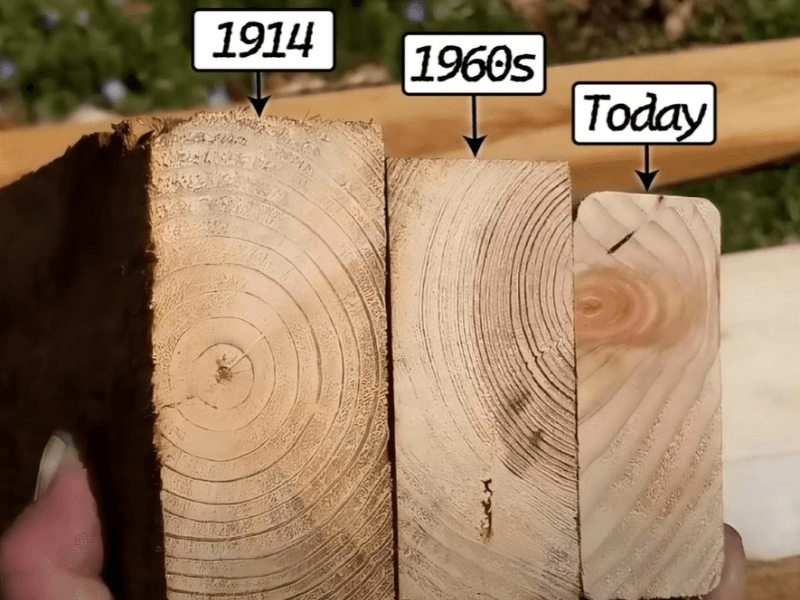Sue want to build her first DIY project – the ultimate chicken coop. When she starts to build the frame, she realizes her 2×4 lumber is actually 1-1/2 inches by 3-1/2 inches.
Most people are shocked to find out that a 2×4 is not actually two inches by four inches. Oh the scandal! But, it’s true! The nominal size of a 2×4 refers to its rough-cut dimensions, not its actual measurements.
But why did lumber dimensions change over time? If you’ve ever wondered why a 2×4 isn’t what it seems, keep reading for an enlightening journey through the evolution of the 2×4.
The Evolution of 2×4 Dimensions
Over a century ago, the production of dimensional lumber in the United States was primarily handled by local manufacturers. These mills would produce rough lumber with varying widths and non-standard dimensions. As a result, builders had to manually plane these boards on-site to fit their construction projects.
The industry wrestled with varying regional interpretations, non-standard widths and lengths, and differing wood types. Its easy to see why “2 by 4” became an ambiguous term across the United States. This lack of uniformity created confusion for both buyers and sellers alike.
Life before lumber size standards
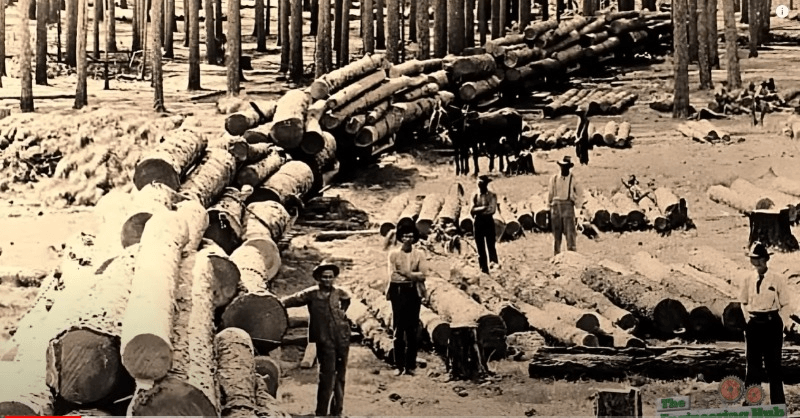
Before the standardization efforts in the construction industry, lumber mills and builders sized lumber to the beat of their own drum.
Builders would order custom-sized pieces of wood to suit their specific project requirements. While this pre-industrial approach allowed builders more control over their projects by accommodating unique specifications, it also presented challenges.
Prioritizing customization meant longer lead times and increased complexity in the manufacturing process. Builders had to wait for their customized orders to be completed before commencing construction activities. Manufacturers had to manage an intricate system of producing various sizes and shapes of wood pieces based on individual requests.
Slimmer 2×4’s – How Shipping Costs Changed Lumber Size
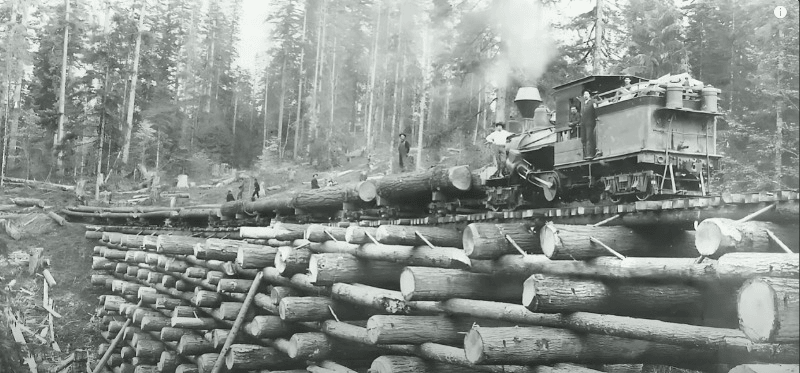
Wood manufacturers faced a significant challenge in the late 1800s when forests near major cities were depleted, necessitating the shipping of lumber over longer distances. However, the exorbitant costs of railroad shipping, often double the price of the lumber itself, prompted manufacturers to find innovative solutions.
To minimize wastage and reduce weight during transportation, manufacturers realized they could plane the lumber at the mill before shipping instead of doing it on-site.
The opening of the Panama Canal in 1914 also applied pressure as it allowed west coast mills to compete for east coast markets. At the time, ocean shipping rates were primarily determined by volume, prompting wood manufacturers to seek ways to decrease shipment volumes. Consequently, they began producing thinner lumber while still referring to it as a “2 by 4.”
How Economic Factors Determined Lumber Sizes
During the great depression, there was a significant decrease in demand for lumber that lasted around ten years. This decline in demand had a profound impact on the evolution of lumber size standardization. The industry’s struggle to perk up demands was seen as a bigger problem.
However, with the outbreak of World War II, everything changed. Suddenly, there was an exponential increase in demand for lumber to accommodate the needs of war efforts around the world. Finally the push for standard lumber sizes came back into focus.
To meet this surge in demand, manufacturers began adjusting the dimensions of their lumber. By doing so, they were able to make more efficient use of raw materials and reduce waste. This optimization not only helped them meet market demands but also improved their overall profitability.
Lumber Size Standards – Forest Products Laboratory to The Rescue
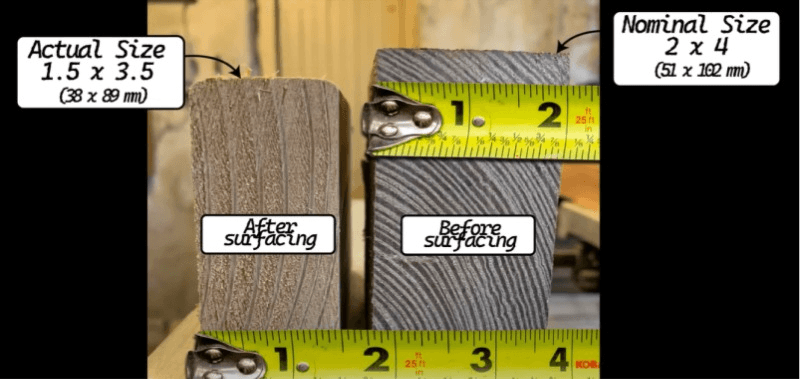
To address the growing confusion and dissatisfaction among retail dealers, the Department of Agriculture took action in 1919 by establishing the Forest Products Laboratory. This laboratory had a clear mission: to investigate suitable dimensions for lumber that could be adopted as a national standard.
After conducting extensive research on 75 mills, it was determined that joists and studs with dimensions of 1-5/8 inches by 3-5/8 inches were optimal both economically and functionally. The researchers found that reducing the material of a 2×4 did not compromise its strength, as added weight did not contribute significantly to its structural integrity.
Over time, further changes were made to the dimensions of a 2×4. These modifications were influenced by factors such as moisture content specifications, shipping costs, and shifts within the industry.
The Modern 2×4 – The Main Player in the Evolution Of Standardized Lumber Sizes
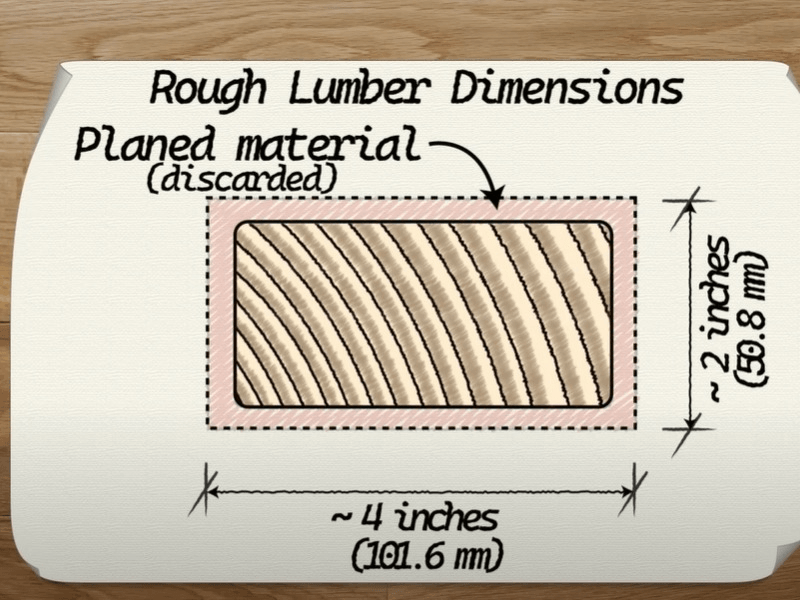
Now that we’ve explored the evolution of lumber dimensions and the factors that have shaped the modern 2 by 4, it’s clear that this seemingly simple piece of wood carries a rich history. From customized sizing in pre-industrial times to national standardization efforts, the dimensions of a 2 by 4 have been influenced by economic factors, shipping costs, and efficiency considerations.
We often take for granted how much time and effort it took to be able to go to a manufacturer and purchase lumber that is standardized. So while a modern-day 2×4 may not measure exactly two inches by four inches, it still serves its purpose as the backbone of most construction projects.
Next time you pick up a piece of lumber or embark on a construction project, take a moment to appreciate the journey that led to those familiar measurements.
FAQs
Why are modern-day 2x4s smaller than their name suggests?
The modern-day dimensions of a 2×4 are smaller due to historical practices and practical considerations. Thinner pieces of wood were favored over time to reduce shipping costs and increase efficiency in transportation. These dimensions eventually became standardized to strike a balance between cost-efficiency and structural integrity.
Can I still find custom-sized lumber if needed?
While standardized dimensions are prevalent in the industry today, it is still possible to find custom-sized lumber if needed. Local sawmills or specialty suppliers may offer options for customized cuts or larger dimensions beyond what is commonly available at retail stores. However, keep in mind that custom sizing may come with additional costs and longer lead times.
